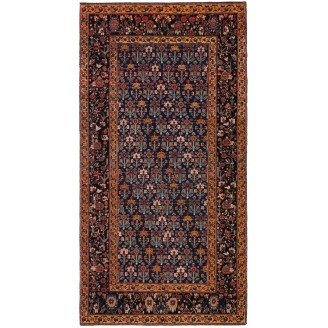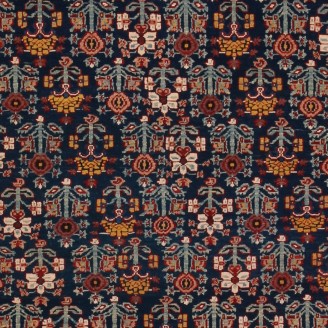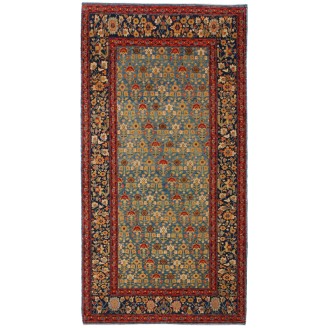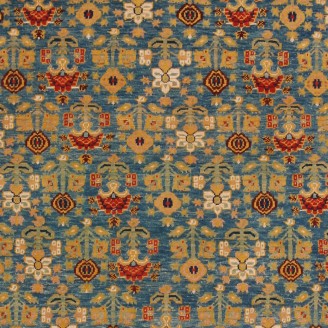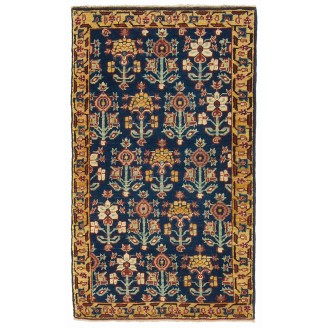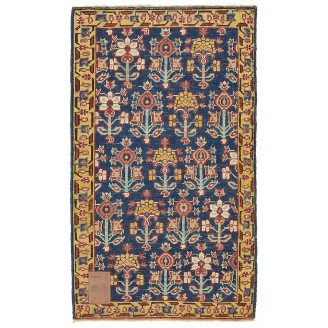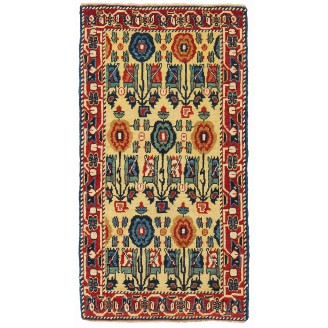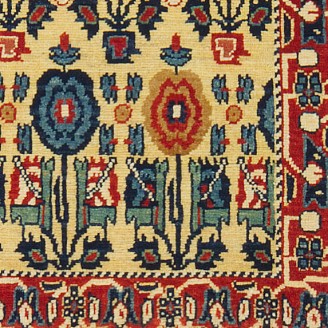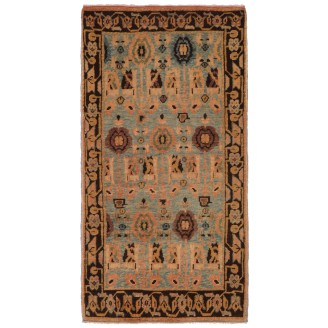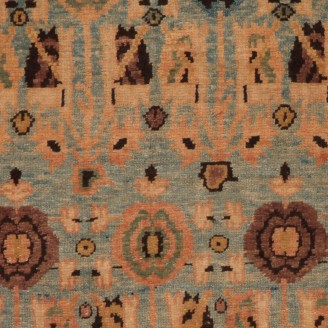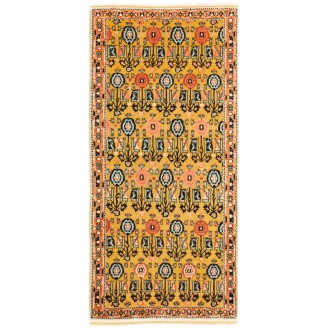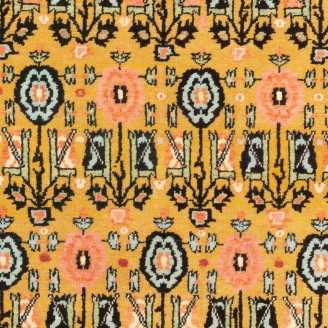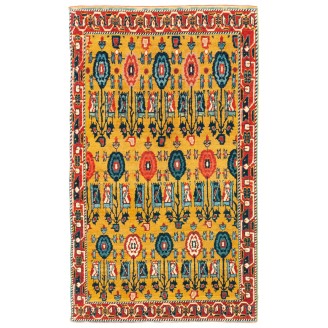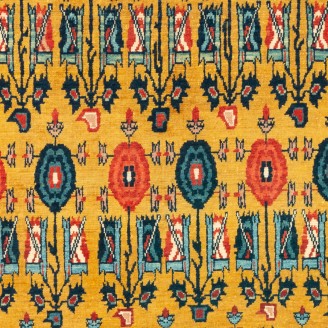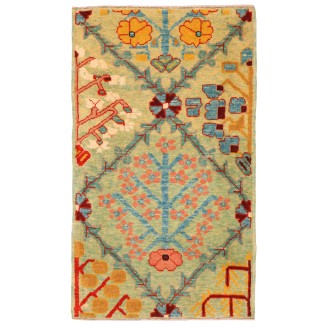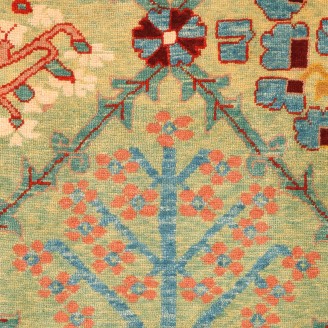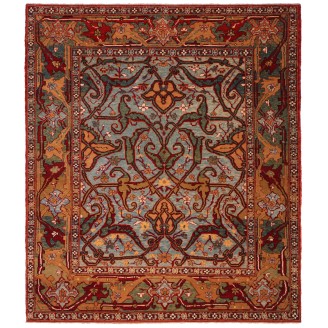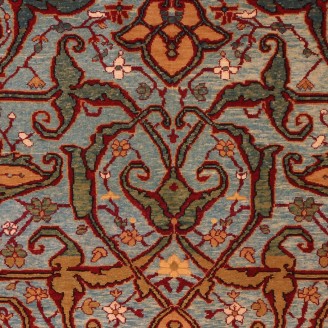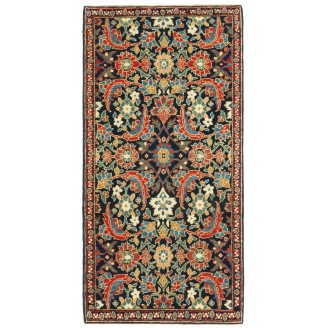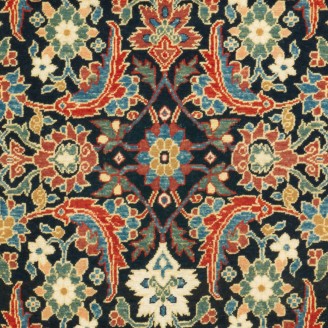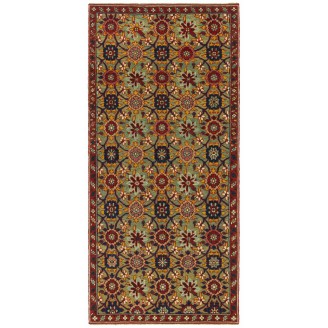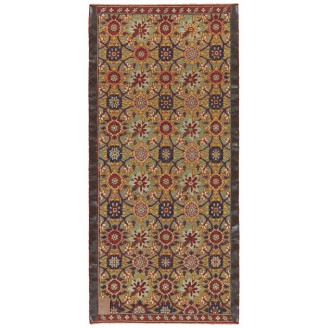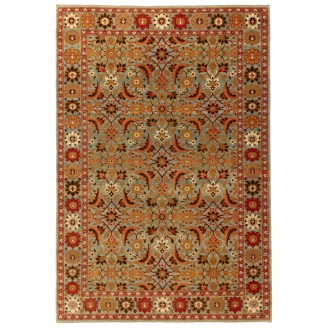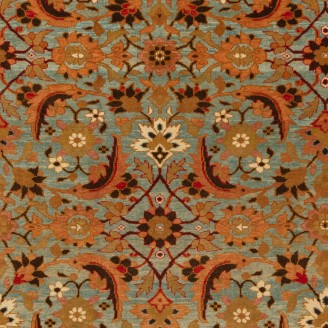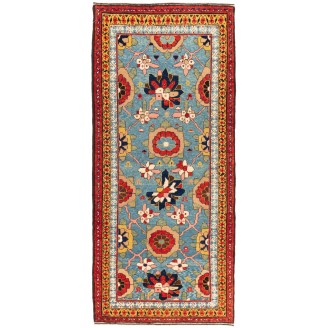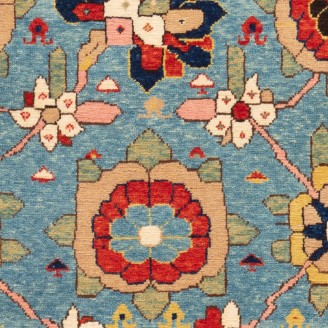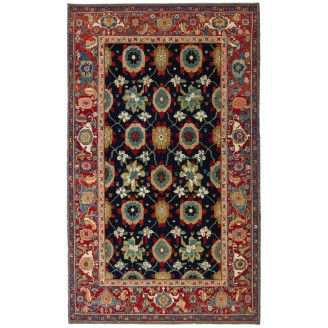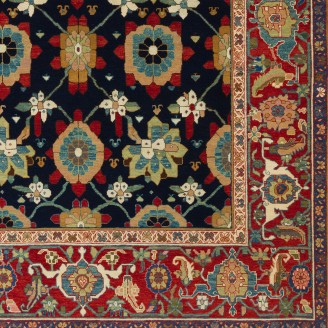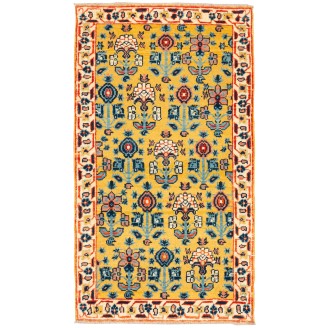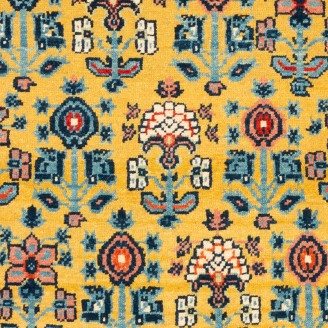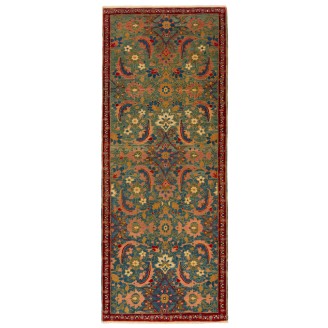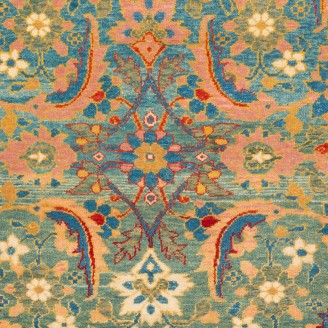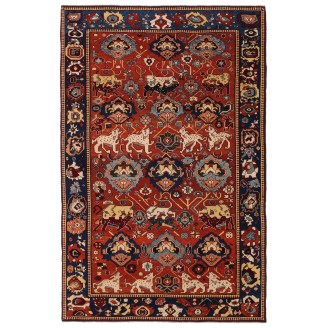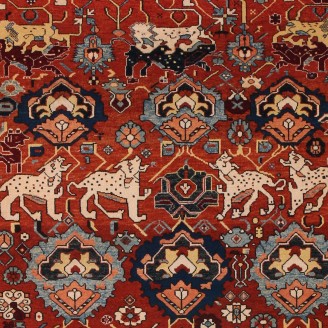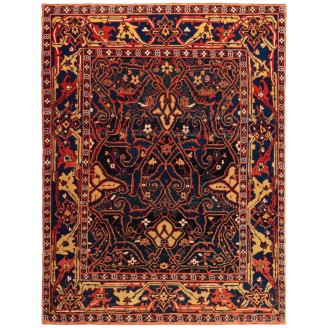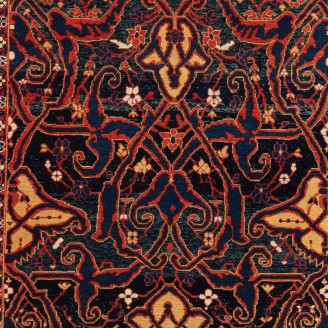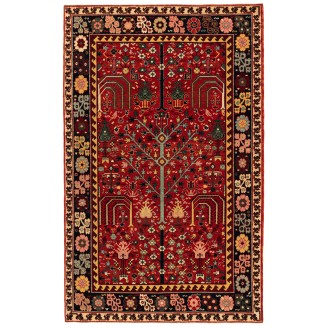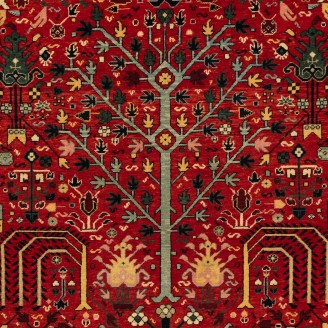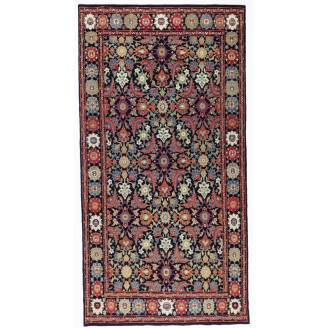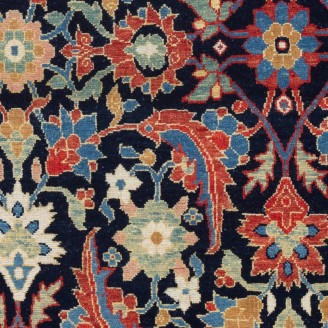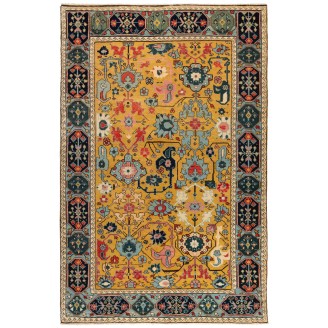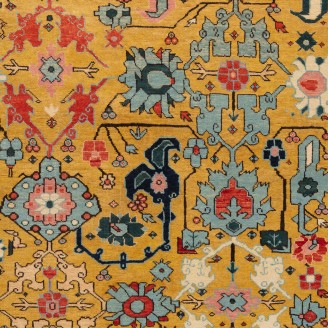COLLECTION OF SENNA RUGS
The capital of Persian Kurdistan. Embodies the elegance and precision of Persian craftsmanship
Model: ART00233
Dimensions: 4'3" X 8'3"(131cm x 253cm)
The source of the rug comes from the book Antique Rugs of Kurdistan A Historical Legacy of Woven Art, James D. Burns, 2002 nr.36 This was an exclusive example of offset rows of ascending flowers design rug c.1800s from Garrus, Eastern Kurdistan area. This type of rug has been called "Joshagan" in th..
Price:
$6,100
Ex Tax:$6,100
Model: ART00376
Dimensions: 4'5" X 8'6"(135cm x 260cm)
The source of the rug comes from the book Antique Rugs of Kurdistan A Historical Legacy of Woven Art, James D. Burns, 2002 nr.36 This was an exclusive example of offset rows of ascending flowers design rug c.1800s from Garrus, Eastern Kurdistan area. This type of rug has been called "Joshagan" in th..
Price:
$6,500
Ex Tax:$6,500
Model: ART00326
Dimensions: 2'9" X 1'8"(85cm x 51cm)
The source of the rug comes from the book Antique Rugs of Kurdistan A Historical Legacy of Woven Art, James D. Burns, 2002 nr.36 This was an exclusive example of offset rows of ascending flowers design rug c.1800s from Garrus, Eastern Kurdistan area. This type of rug has been called "Joshagan" in th..
Price:
$825
Ex Tax:$825
Model: ART00210
Dimensions: 1'8" X 3'2"(53cm x 98cm)
The source of the rug comes from the book Antique Rugs of Kurdistan A Historical Legacy of Woven Art, James D. Burns, 2002 nr.28. This was an exclusive example of offset rows of flowers designed 18th-century rug from Senna, Eastern Kurdistan area. This example is special because the flowers are well..
Price:
$825
Ex Tax:$825
Model: ART00241
Dimensions: 1'8" X 3'1"(51cm x 95cm)
The source of the rug comes from the book Antique Rugs of Kurdistan A Historical Legacy of Woven Art, James D. Burns, 2002 nr.28. This was an exclusive example of offset rows of flowers designed 18th-century rug from Senna, Eastern Kurdistan area. This example is special because the flowers are well..
Price:
$825
Ex Tax:$825
Model: ART00328
Dimensions: 2'7" X 5'6"(80cm x 170cm)
The source of the rug comes from the book Antique Rugs of Kurdistan A Historical Legacy of Woven Art, James D. Burns, 2002 nr.28. This was an exclusive example of offset rows of flowers designed 18th-century rug from Senna, Eastern Kurdistan area. This example is special because the flowers are well..
Price:
$2,500
Ex Tax:$2,500
Model: ART00275
Dimensions: 2'8" X 4'5"(82cm x 137cm)
The source of the rug comes from the book Antique Rugs of Kurdistan A Historical Legacy of Woven Art, James D. Burns, 2002 nr.28. This was an exclusive example of offset rows of flowers designed 18th-century rug from Senna, Eastern Kurdistan area. This example is special because the flowers are well..
Price:
$1,950
Ex Tax:$1,950
Model: ART00204
Dimensions: 1'10" X 3'0"(56cm x 92cm)
The source of the rug comes from the book Antique Rugs of Kurdistan A Historical Legacy of Woven Art, James D. Burns, 2002 nr.6. This is one of the most popular and ubiquitous lattice designs of 18th-century rugs from Koliya'i, Southern Kurdistan area. Any danger of monotony is overcome both by the ..
Price:
$825
Ex Tax:$825
Model: ART00340
Dimensions: 4'10" X 5'6"(148cm x 168cm)
The source of the rug comes from the book Antique Rugs of Kurdistan A Historical Legacy of Woven Art, James D. Burns, 2002 nr.33. This is a fine Kurdish workshop rug with split-palmette and trefoil arabesque patterns designed mid-19th century rug from Senna or Garrus, Eastern Kurdistan area. This de..
Price:
$3,400
Ex Tax:$3,400
Model: ART00276
Dimensions: 2'7" X 5'1"(80cm x 156cm)
The source of the rug comes from the book Antique Rugs of Kurdistan A Historical Legacy of Woven Art, James D. Burns, 2002 nr.31. This blue background rug has a variation of masi awita (fish around the lotus) pattern from Senna, Eastern Kurdistan area late 19th century. The field design on this rug ..
Price:
$2,300
Ex Tax:$2,300
Model: ART00615
Dimensions: 5'7" X 2'8"(171cm x 82cm)
The source of the rug comes from the book Antique Rugs of Kurdistan A Historical Legacy of Woven Art, James D. Burns, 2002 nr.2. This was an exclusive example of a Mina Khani lattice design mid-19th century rug from Koliya'i, Southern Kurdistan area. The mina khani is composed of a se..
Price:
$2,800
Ex Tax:$2,800
Model: ART00308
Dimensions: 5'2" X 7'6"(159cm x 231cm)
The source of the rug comes from the book Antique Rugs of Kurdistan A Historical Legacy of Woven Art, James D. Burns, 2002 nr.31. This blue background rug has a variation of masi awita (fish around the lotus) pattern from Senna, Eastern Kurdistan area late 19th century. The field design on this rug ..
Price:
$6,800
Ex Tax:$6,800
Model: ART00327
Dimensions: 2'9" X 6'3"(85cm x 191cm)
The source of the rug comes from the book Antique Rugs of Kurdistan A Historical Legacy of Woven Art, James D. Burns, 2002 nr.4. This was an exclusive example of a Mina Khani lattice design mid-19th century rug from Koliya'i, Southern Kurdistan area. The mina khani is composed of a series of rows of..
Price:
$2,900
Ex Tax:$2,900
Model: ART00510
Dimensions: 6'6" X 10'9"(199cm x 330cm)
The source of the rug comes from the book Antique Rugs of Kurdistan A Historical Legacy of Woven Art, James D. Burns, 2002 nr.4. This was an exclusive example of a Mina Khani lattice design mid-19th century rug from Koliya'i, Southern Kurdistan area. The mina khani is composed of a series of rows of..
Price:
$12,600
Ex Tax:$12,600
Model: ART00237
Dimensions: 1'8" X 3'0"(53cm x 93cm)
The source of the rug comes from the book Antique Rugs of Kurdistan A Historical Legacy of Woven Art, James D. Burns, 2002 nr.36 This was an exclusive example of offset rows of ascending flowers design rug c.1800s from Garrus, Eastern Kurdistan area. This type of rug has been called "Joshagan" in th..
Price:
$825
Ex Tax:$825
Model: ART00456
Dimensions: 2'7" X 6'6"(81cm x 200cm)
The source of the rug comes from the book Antique Rugs of Kurdistan A Historical Legacy of Woven Art, James D. Burns, 2002 nr.31. This blue background rug has a variation of masi awita (fish around the lotus) pattern from Senna, Eastern Kurdistan area late 19th century. The field design on this rug ..
Price:
$2,900
Ex Tax:$2,900
Model: ART00289
Dimensions: 4'9" X 7'2"(145cm x 219cm)
The source of carpet comes from the book Orient Star - A Carpet Collection, E. Heinrich Kirchheim, Hali Publications Ltd, 1993 nr.81. This is an example of one of the most intriguing design groups of carpets from the Caucasus and North-west Persia area, and surrounding regions 17th to 18th century. ..
Price:
$5,900
Ex Tax:$5,900
Model: ART00232
Dimensions: 4'9" X 6'3"(147cm x 191cm)
The source of the rug comes from the book Antique Rugs of Kurdistan A Historical Legacy of Woven Art, James D. Burns, 2002 nr.33. This is a fine Kurdish workshop rug with split-palmette and trefoil arabesque patterns designed mid-19th century rug from Senna or Garrus, Eastern Kurdistan area. This de..
Price:
$5,200
Ex Tax:$5,200
Model: ART00476
Dimensions: 4'10" X 7'8"(149cm x 235cm)
The source of the rug comes from the book Antique Rugs of Kurdistan A Historical Legacy of Woven Art, James D. Burns, 2002 nr.45. This is a popular design employed by the Kurds, called bid majnum (or Bid Majnun, weeping willow) 17th-century rug from Sa'uj Bulagh, Eastern Kurdistan area. Four differe..
Price:
$6,500
Ex Tax:$6,500
Model: ART00218
Dimensions: 5'1" X 9'10"(157cm x 302cm)
The source of the rug comes from the book Antique Rugs of Kurdistan A Historical Legacy of Woven Art, James D. Burns, 2002 nr.31. This blue background rug has a variation of masi awita (fish around the lotus) pattern from Senna, Eastern Kurdistan area late 19th century. The field design on this rug ..
Price:
$8,800
Ex Tax:$8,800
Model: ART00371
Dimensions: 4'5" X 6'11"(137cm x 211cm)
The source of the rug comes from the book Antique Rugs of Kurdistan A Historical Legacy of Woven Art, James D. Burns, 2002 nr.40. This offset pattern is composed of palmettes and stems with large forked leaves, one has the impression that it is only part of a larger scheme designed 17th-century rug ..
Price:
$4,900
Ex Tax:$4,900
